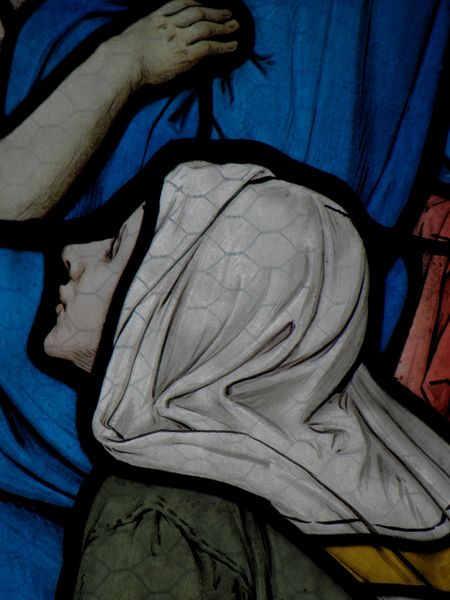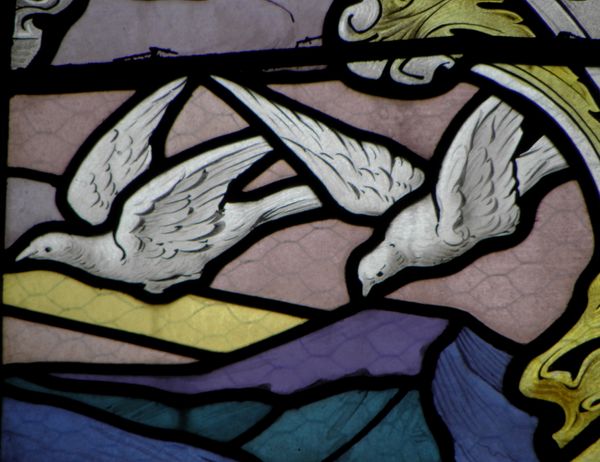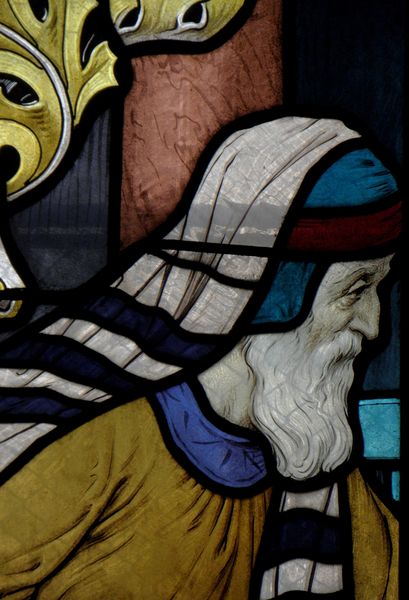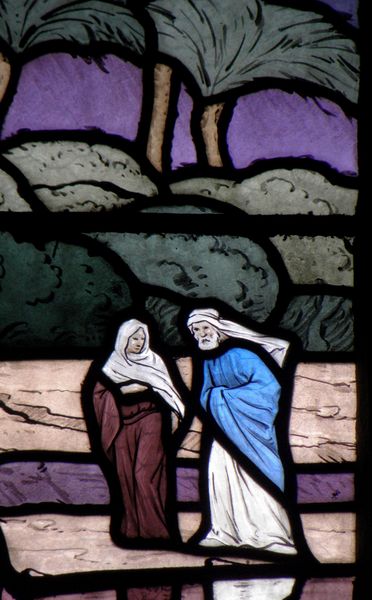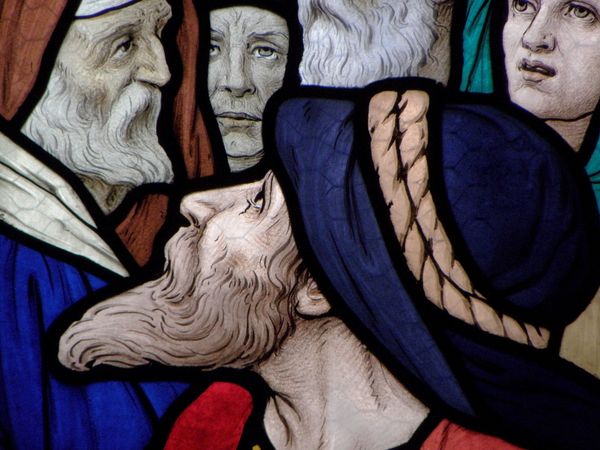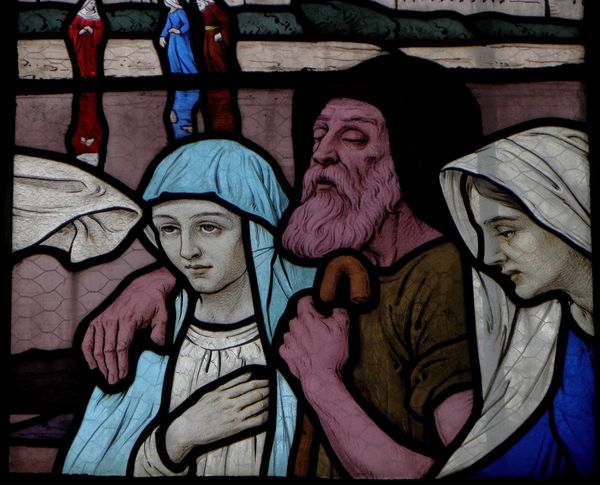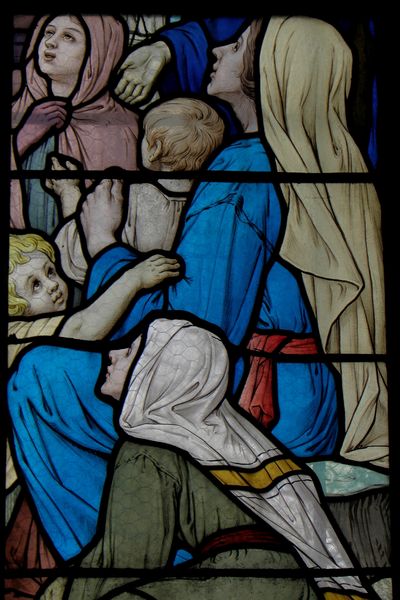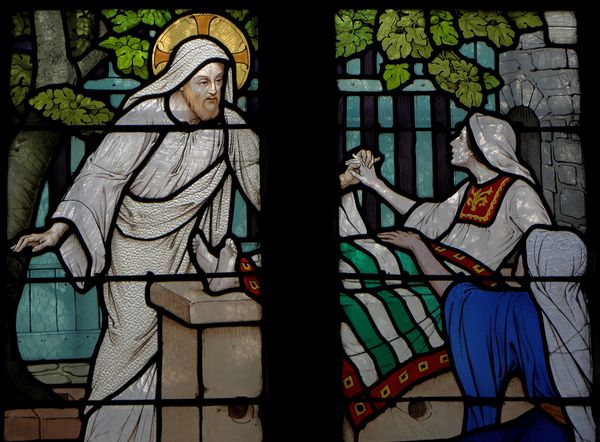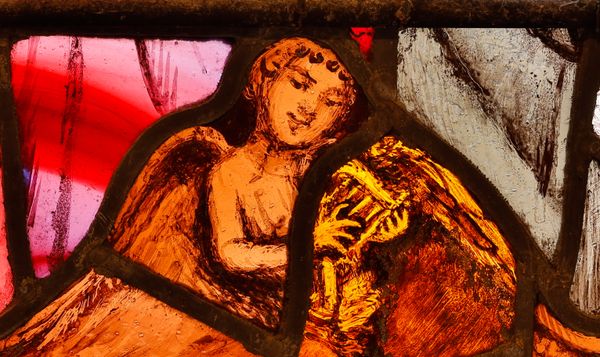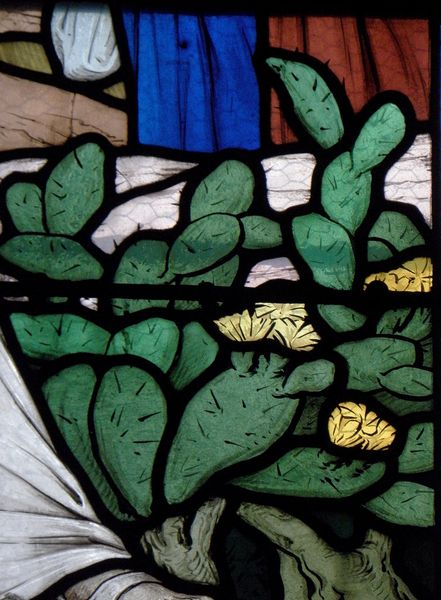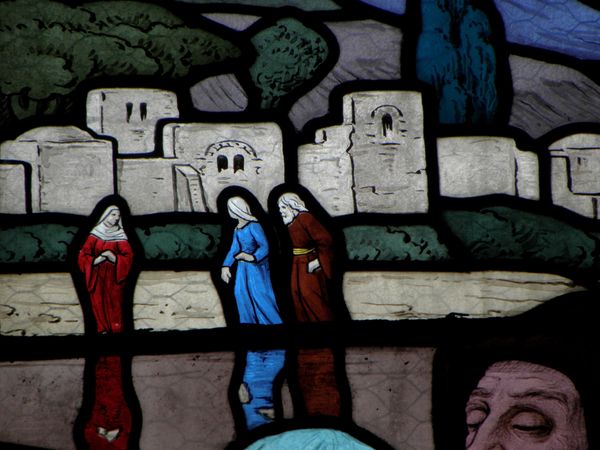
painting, glass, mural
#
portrait
#
medieval
#
painting
#
figuration
#
mural art
#
glass
#
history-painting
#
mural
Copyright: Public domain
Ludovic Alleaume made this stained glass detail in the Église Saint-Sulpice de Fougères, working with light itself as a kind of pigment. The lines of the folds in the figure's veil aren't just decorative; they trace a path, a flow of movement. You can see how the material itself—the glass—plays a huge role here. It’s luminous, of course, but it also has this beautiful, almost tactile quality. Look at how the light filters through the veil, creating shadows that define the form. The glass seems to have been treated with layers of pigment, building up depth and volume. The blue of the garment is so dense and intense that it feels like a solid presence, anchoring the figure in space. This reminds me a little of the way Brice Marden worked with wax and pigment, building up layers of translucent color, or maybe even some of the early Renaissance masters who were also experimenting with light and shadow in their paintings. Art is always an ongoing conversation, you know, and this piece really speaks to that. It's a testament to the power of light, color, and form to evoke emotion and tell a story.
Comments
No comments
Be the first to comment and join the conversation on the ultimate creative platform.
